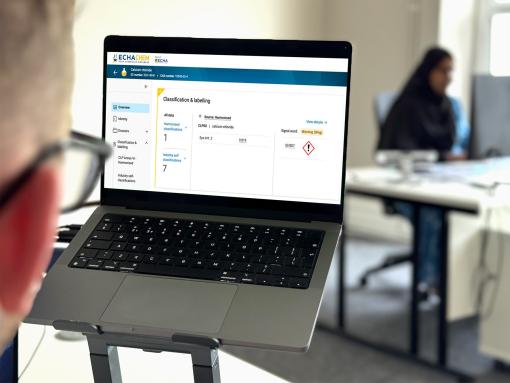On 12 September 2025, the United Nations Economic Commission for Europe (UNECE) released the 11th revised edition of the Globally Harmonised System of Classification and Labelling of Chemicals (GHS). Known as ‘GHS Rev.11,’ this update builds on the 10th edition with important amendments designed to reflect scientific progress, align with non-animal testing approaches, and improve hazard communication worldwide.
For regulatory teams, industry practitioners, and anyone working with classification and labelling, these revisions are worth close attention.
What’s New in GHS Rev.11?
Clarified Rules for Aerosols and Pressurised Chemicals
Chapter 2.3 has been updated to provide clearer classification criteria for aerosols and chemicals under pressure. These refinements aim to remove ambiguity in hazard assessment and support more consistent application across member states.
New Non-Animal Methods for Skin Sensitisation
In Chapter 3.4, the GHS now includes guidance on classifying chemicals for skin sensitisation using non-animal methods. This is a significant step toward integrating alternative approaches, in line with the 3Rs principle (Replacement, Reduction, and Refinement of animal testing).
Recognising Chemicals that Contribute to Global Warming
A new category in Chapter 4.2 introduces classification for substances and mixtures hazardous by contributing to global warming. This addition reflects growing global attention on climate change and the role of chemical regulation in mitigating environmental risks.
Streamlined Precautionary Statements for Labelling
To improve usability, precautionary statements have been further rationalised and simplified. The goal is to make hazard communication clearer for end users while keeping labelling practical for industry compliance.
Annex 11: Identifying Simple Asphyxiants
A brand-new section in Annex 11 provides guidance for identifying simple asphyxiants. This fills a long-standing gap, offering practitioners a clearer framework for classification.
Preparing for GHS Rev.11 Updates
The GHS is a global framework, but each country or region decides how and when to adopt new revisions. Companies should monitor updates from local regulators – such as HSE in Great Britain or ECHA in the EU – to understand when Rev.11 changes will come into force nationally.
- Review your product portfolio against the new classification criteria.
- Update SDSs and labels in line with revised precautionary statements.
- Consider how NAMs could be integrated into your testing strategies.
- Keep track of national implementation timelines, as adoption may vary by jurisdiction.
Anticipating the Impact of the GHS Framework Changes
For companies placing chemicals on the market, anticipating the changes to the GHS framework will be critical for regulatory compliance, hazard communication, product stewardship, and product market appeal. The inclusion of climate-related hazards and non-animal test methods also reflects a broader trend: regulators are moving toward sustainability and animal welfare-conscious science.
- Stronger alignment with non-animal testing strategies.
- Clearer rules for chemical classification.
- The first formal recognition of global warming hazards within GHS.
- Enhanced usability of labels and precautionary statements.
For organisations working across borders, adopting GHS Rev.11 early will support smoother compliance and reduce risks when national systems update their frameworks.
Safe & Sustainable Chemical Management
While GHS Rev. 11 introduces incremental rather than radical changes, the updates are important. Companies who adapt early will reduce compliance risks and demonstrate proactive commitment to safe and sustainable chemical management.
>> Read the full UNECE GHS Rev.11 here: UNECE GHS Revision 11 (2025)
If you need any chemical regulatory support, including classification and labelling, call or email and speak with one of our regulatory consultants.



